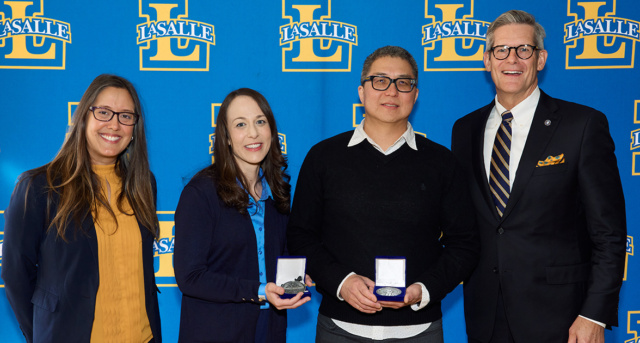La Salle University

What You’ll learn
The program is designed to address three of the principal environments where translation and interpretation (English-Spanish and Spanish-English) are currently needed and will be more intensely needed in the future; that is, legal, healthcare and business environments.
Why Study Translation and Interpretation at La Salle?
The Masters in Translation and Interpretation will establish a new standard for translators and interpreters in this geographic area and the nation by training individuals for multi-competency employment to aid/keep pace with the need for multilingual capabilities in the marketplace. The program seeks to educate the public on the importance of training and employing professional translators and interpreters.
Highlighted Courses
BLS 612 – Consecutive Interpretation and Sight Translation
This course builds on the practical and theoretical foundation laid in BLS 611, Fundamentals of Interpretation. In consecutive interpreting, students learn to identify the implicit structural organization of an extemporaneous speech by presenting and interpreting speeches of this type. The course reinforces the ability to perceive essential meaning and introduces note-taking techniques. It emphasizes clarity of expression, correct style and grammar, proper diction, and polished presentation. Note taking and sight translation are introduced in the latter part of the course.
BLS 617 – Technology: Applications in Translation and Interpretation
This course analyzes current tools to enhance and speed the translation process. These tools include word processors as well as CAT (computer-assisted translation), voice-recognition, and proofreading tools. The course explores and discusses their practical applications and features in terms of pricing, productivity, user-friendliness, quality output, and compatibility with other tools. The course examines simultaneous interpretation and video and telephonic interpreting in terms of both the software and hardware available to perform these types of interpreting and the job opportunities for interpreters in these growing areas. The course also introduces students to new fields in which translation and interpretation skills are being applied, such as subtitling, web and software localization, and voice-over, along with the tools needed to work in these fields. Students will become familiar with tools and resources to aid them in launching a translation and interpretation business and in keeping current with new advances in the industry.
BLS 639 – Advanced Spanish Grammar and Syntax
This course is designed to provide a review of standard Spanish grammar and syntax for advanced students of the language. It includes intensive oral and written practice with a view toward improving native and non-native students’ speaking and writing skills. The course also intends to make all speakers aware of standard Spanish cultivated in schools of the Spanish-speaking world.
Meet the Faculty
Our faculty educates students for multi-level competency employment while developing and enhancing their linguistic competence and cultural awareness.
Career Opportunities
According to the U.S. Bureau of Labor Statistics, the median annual wage for interpreters and translators was $49,110 in May 2021. Employment of interpreters and translators is projected to grow 20 percent from 2021 to 2031, much faster than the average for all occupations.

As part of its annual Mission and Heritage Week celebration, La Salle University proudly recognized two outstanding members of its community with 2025 Distinguished Lasallian Educator Awards on April 9, 2025.

The 2025 Day of Giving raised the most money of all 12 Days of Giving to date, reaching more than $1.9 million in support of La Salle students.

Ranked tied for 100, La Salle is one of just two Philadelphia-area institutions to be listed in the top 100 of the USNWR 2025 Best Business School rankings.